An absurd privilege | JUNE 11
The family of Therese Wiedmann (née Toffler) in Vienna was secular and very well integrated. While the Tofflers were keenly aware of the situation in Germany, no one among Therese’s relatives foresaw that so many Austrians would be so quick to welcome Hitler and abandon Austrian independence. After the “Anschluss” in March 1938 she immediately lost her job with Tiller AG. Her grandfather, until recently the president of the company, was no longer permitted to enter his office. Her father, Emil, the executive manager, was kept around for the time being, in order to familiarize the new, “Aryan” management with the company’s operations. Luckily, he had transferred part of his assets to England before the “Anschluss.” In better days, the company was deemed sufficiently Austrian to be appointed a purveyor to the royal-imperial court, for which it produced army uniforms. This passport, issued to Therese Wiedmann on June 11, 1938, contains a visa that includes “all countries of the earth” and “return to the German Reich.”
Nightmares | DECEMBER 11
When, in November 1938, Gertrude Fichmann gave her 12-year-old son, Harry, a diary in which to record the family’s emigration experience, she had no idea at which point they would leave and where their journey would take them. Nor could she have anticipated just how eventful a time was coming up for Austrian Jewry in general and for her family in particular. As almost every day brought new, disturbing incidents, Harry would record the latest developments regularly and articulately. Witnessing the frightening events and watching the fear of the adults in his life clearly took a toll on him: on December 11th, he describes having spent the night tortured by nightmares.
Arson | NOVEMBER 11
As Jews in Chemnitz were struggling to come to terms with the brutal violence they had experienced two days before – the magnificent synagogue had been set on fire and destroyed during the November Pogroms, in the night from November 9 to 10 (later known as “Kristallnacht” or “Night of Broken Glass”), and 170 members of the community deported to the Buchenwald concentration camp – the community’s representative, the merchant Josef Kahn, was contacted by the town’s mayor. With mind-boggling cynicism, he demanded the removal within three days of the ruins of “the synagogue […] which caught fire in the night from November 9th to 10th, 1938.” If the order wasn’t carried out within the prescribed time, the municipal building inspection department (Baupolizei) would arrange clearance at the owner’s expense.
Driven to suicide | OCTOBER 11
Since 1876, the Prager Tagblatt was known as a bastion of liberal- democratic positions. Over time, it acquired a staff of first-rate writers, including greats such as Franz Kafka, Max Brod, Kurt Tucholsky, Egon Erwin Kisch and Alfred Döblin – to name but a few. The paper was valued for its excellent reporting, its outstanding feuilleton and its unique style: even the political reporting was not devoid of humor. As a liberal-democratic paper with a predominantly Jewish staff, the Tagblatt had unequivocally positioned itself against the Nazi regime. Several of the roughly 20,000 political adversaries of the Nazis who had escaped to Czechoslovakia joined the ranks of the publication’s contributors. After the entry of the German Army to the Sudetenland in early October of 1938, the situation of German-speaking democrats came to a head in Czechoslovakia, too: according to this report from the Jewish Telegraphic Agency, dated October 11, the editor-in-chief of the Prager Tagblatt, Rudolf Thomas, and his wife committed suicide out of despair over the situation.
A former sanctuary | SEPTEMBER 11
Rome is the paradise of every ancient historian, a city rife with history. However, for Herbert Bloch, since 1935 a Ph.D. in Roman History, it was something more, a sanctuary from Nazi Germany. The native Berliner had come to the University of Rome as a student shortly after Hitler took over. In 1938, he was part of the team that excavated and examined much of the area of Ostia Antica, the ancient seaport of Rome. The photo shows Bloch on September 11th, 1938, in front of parts of the excavations. But 1938 was also the year in which the previously latent yet tangible anti-Semitism of fascist Italy officially became state policy. Just a few days before this photo was taken, Mussolini had passed the first of many anti-Semitic race laws. The “Measures for the Defense of the Race in the Fascist School” of September 5th, 1938 had especially hit home for Herbert Bloch. The law – among other matters – barred all Jewish teaching staff from schools and universities. Rome could no longer be Bloch’s place of refuge.
Individual hakhsharah | AUGUST 11
In July 1938, 17-year-old Marianne Pollak traveled all by herself from Teplitz/Teplice (Czechoslovakia) to England. Not accustomed to the climate there, the young girl developed rheumatism and was in generally miserable condition. Every few days, her mother wrote her caring, supportive letters. While clearly vexed by Marianne’s unhappiness, Mrs. Pollak and her husband made sure to communicate to her the importance of her staying in England. Apparently, Marianne was in an individual hakhsharah program, meaning that she was acquiring skills preparing her for pioneer life in Palestine. In Eastern Europe, the Zionist Pioneer organization “HeChalutz” (“The Pioneer”) had been offering agricultural and other training courses for prospective settlers in pre-state Palestine since the late 19th century. A German branch was established in 1923, but the concept gained traction in western Europe only during the Great Depression and had its broadest reach during the years of persecution by the Nazis. Instead of being prepared collectively on farms, youngsters could also get their training individually, as seems to have been the case with Marianne.
Rejection letter | JULY 11
“The position under discussion has been filled,” was the terse answer Johanna Rosenthal, a former postal clerk, received to her application for a job as a telephone operator. After 14 years of service with the Deutsche Reichspost, she had been dismissed at the end of 1933. As she points out in her letter, her employment in public service as a Jew has been made impossible by the “Law for the Restoration of the Professional Civil Service.” The provisional pension of 68 Reichsmark that she had been granted was not enough to live on, so she sought new employment.
A 5th birthday | JUNE 30
Wilhelm Hesse was a loving and profoundly involved father. Since the births of his daughters, Helen (1933) and Eva (1936), he had meticulously documented the girls’ development in diaries which he kept for them. In addition to little texts and poems he composed, he included numerous photographs as well as material referring to Jewish holidays. Occasionally, the frequently humorous, sometimes even childlike tone is interrupted by material documenting the political situation, such as a call by Rabbi Leo Baeck for Jewish unity and solidarity in the name of the Reich Representation of German Jews. But Helen and her sister Eva were lucky enough to be too young to grasp what was looming around them. June 30 was Helen’s 5th birthday.
Gestapo warrant for protective custody | JUNE 29
The Gestapo warrant for protective custody dated June 29, 1939 confirmed the hitherto merely formal arrest of the Jewish and communist painter Lina (Lea) Grundig (also see June 1). After her conviction of high treason, she was held at the Dresden Court Jail.
A professional farewell letter | JUNE 28
The observance of Shabbat, holidays, and kashrut was so deeply ingrained in the life of the Lamm family in Munich that even the Catholic cook, Babett, saw to it that the traditional customs were adhered to. While traditional in their understanding of Judaism, the Lamms were open to worldly matters. After high school, Hans briefly studied law, but, understanding that in the new political climate, there was no way a Jew could advance in the field, he embarked on a career in journalism instead. The career paths of Jewish jounalists at the time were also stymied by the fact that non-Jewish papers would not hire them and Jewish ones were forced to close down one by one. In 1937, Lamm relocated to Berlin, where he studied with Leo Baeck and Ismar Elbogen at the Lehranstalt für die Wissenschaft des Judentums, in order to deepen his understanding of Judaism. Deeply rooted in German culture as he was, it was difficult for him to decide to emigrate. Yet eventually, his older brother convinced him that there was no future for Jews in Germany. In this letter, the 25 year-old Lamm cordially and politely, yet without palpable emotion, bids farewell to the editors of the Jewish monthly, Der Morgen, a high-level publication to which he had been contributing, expressing his gratitude for their support.
Deportation within 24 hours | JUNE 27
While antisemitism was by no means a new phenomenon in Yugoslavia—as a matter of fact, especially since World War I, the entire political spectrum found reasons to attack Jews—under the impact of events in Germany, the situation deteriorated in the 1930s. Fritz Schwed from Nuremberg was under no illusions regarding his and his family’s temporary refuge. In this lengthy letter to his old friend from Nuremberg days, Fritz Dittmann, who had fled to New York, Schwed describes the dismal situation of emigrants in Yugoslavia, who are routinely expelled with just 24 hours’ notice. Even older people who have resided in the country for decades are not exempt from this cruel policy. Emigrants are forbidden to work, and when they are caught flouting the prohibition, they have to be prepared for immediate expulsion. Concluding that “There no longer is room for German Jews in Yugoslavia, and it seems to me, nowhere else in Europe, either,” Schwed explores possibilities to immigrate to Australia or South America.
Shattered existence | JUNE 26
The first major rupture in artist Gustav Wolf’s biography had occurred during World War I. He had volunteered for frontline duty and was badly injured. His brother Willy was killed in combat. The works in which he processed his wartime experiences leave no doubt about his feelings. Instead of glorifying war, he shows its horrors. His confrontation with antisemitism during and after the war led him to an increased awareness of his own Jewishness. In 1920 he accepted a professorship at the Baden Art School in Karlsruhe, trying to realize his ideal of an equitable partnership between teacher and student. After a year, he quit this “dead activity,” referring to the school as “an academy of schemers.” In 1929, he designed the set for Fritz Lang’s silent film “Woman in the Moon,” an early science-fiction movie. Upon the Nazi rise to power in 1933, he canceled his memberships with all the artists’ associations to which he had belonged. In his letter to the Baden Secession, he explained his decision with the following words: “I must first get my bearings again. The foundations of my existence have been called into question and shaken.” After extended stays in Switzerland, Italy and Greece, he returned to Germany in 1937. In February 1938, he boarded a ship to New York. June 26, 1938 was his 49th birthday.
Liver dumplings, Christmas stollen, matzo balls | JUNE 25
In Anni Buff’s personal recipe book, dated June 25, 1938, traditional Bavarian dishes, like liver dumplings, Christmas stollen, and cottage cheese doughnuts, certainly outweighed traditional Jewish ones, such as matzo balls. The Jewish community in her native Krumbach was well integrated. Since its peak in the early 19th century, when it constituted about 46% of the population, its ranks had declined considerably, and by 1933, only 1,5% of Krumbachers were Jewish. In spite of this negligible presence of Jews, National Socialism with its rabidly antisemitic message took hold fast, and even before it became national policy, Jews in the little town were harassed by SA men. By 1938, the abuse had become so unbearable that Anni’s father Julius, who dealt in upholstery material, began to explore possibilities to find a new home on safer shores, such as the US, the Dominican Republic, or Shanghai. Not even the fact that he had lost a brother in WWI and had himself served in the 16. Bavarian Reserve Infantry Regiment—along with a young Austrian named Adolf Hitler—did anything to improve his standing with Nazi authorities.
Skills training for Palestine | JUNE 24
When the Halutz (Pioneer) Movement first began to establish itself in Germany in the 1920s, it had a hard time gaining traction among the country’s mostly assimilated Jews, who saw themselves as “German citizens of Jewish faith.” The Movement, which aimed to prepare young Jews for life in Palestine by teaching the Hebrew language as well as agricultural and artisanal skills, got its first boost during the Great Depression (from 1929), which made emigration more attractive as an opportunity for economic improvement. But even more significant growth took place after the Nazis’ rise to power: so-called “Hachscharot” sprung up all over Germany, instilling young Jews with a meaningful Jewish identity and imparting valuable skills. The photo presented here shows graduates of the Jewish Professional School for Seamstresses on Heimhuderstraße.
Interview at the US-Consulate | JUNE 23
After his first official attempt to immigrate had failed under adventurous circumstances, 20 year-old Heinz Ries of Berlin made another effort to get permission to live in the US permanently and legally. For months, he had struggled in the shadows as an undocumented immigrant in New York. After obtaining an affidavit of support, Ries traveled to Havana and visited the US consulate there on June 23, 1938. Finally, he was admitted legal entry into the United States. After the war he returned to Germany for some time, first in the employment of the Allies, then as a photo journalist for the New York Times. The photographs of the Berlin Blockade and the Airlift, taken during these years, made him world-famous under the name Henry Ries.
Billy Wilder | JUNE 22
Samuel (later “Billy”) Wilder had a mind of his own: born in 1906 into an Austrian-Jewish family in the Galician town of Sucha Beskidzka, then part of the Austro-Hungarian Empire, he was expected to join his father’s business, which consisted mainly of a chain of railroad restaurants. But after the Realgymnasium and a brief stint at law school in Vienna (he dropped out after three months), he decided to follow his true leanings. At the paper Die Stunde, a tabloid of questionable repute, he got his first shot at practicing his writing skills. In 1926, an opportunity arose for him to move to Berlin, where he freelanced for various tabloids and took up screenwriting. After the Nazis’ ascent to power, Wilder first moved to Paris and was given the opportunity to direct his first movie, Mauvaise graine. In 1934 he entered the US on a visitors visa. From 1936, he was under contract at Paramount Pictures. June 22, 1938 was his 32nd birthday – the sixth he celebrated in exile.
A weekly lifeline | JUNE 21
As the influx of refugees from Nazi Germany intensified, what had begun in 1934 as the anniversary brochure of the German Jewish Club in New York quickly turned into a professional publication and a lifeline for the uprooted. With its offer of a wide range of cultural and athletic activities, the monthly was an emotional anchor for the newcomers, but it also offered practical help getting settled in the new country. This issue of the Aufbau from June 1938 features a large number of rental ads, mostly for fully furnished rooms, often in the Washington Heights neighborhood of Northern Manhattan, thereby giving some extra income to the owners or main tenants while providing affordable housing to refugees who usually arrived with very little money and property.
The crowd looked on quietly | JUNE 20
Section 17 of the Third Supplementary Decree on the Reich Citizenship law (Reichsbürgergesetz), issued on June 14, called for marking Jewish businesses at a date yet to be determined. The Nazis lost no time. According to this article by the Jewish Telegraphic Agency, days later, the word “Jew” and Nazi slogans were smeared on Jewish shop windows throughout Berlin in an organized fashion, with the same red, hard-to-remove oil paint used everywhere. There could be no doubt that the action was carried out with blessings from above. While no opposition from the non-Jewish population is recorded, the correspondent does point out that unlike in Vienna and in less affluent parts of Berlin, the crowd on Kurfürstendamm looked on quietly, without major enthusiasm. Tension among Jews was intensified by reports of plans to build labor camps where Jews apprehended in recent raids were to be put to work.
A letter from Shanghai | JUNE 19
At a time when more and more German Jews became anxious to leave the country, this letter from a German-Jewish emigrant in Shanghai, addressed to the “gentlemen of the Hilfsverein [Aid Society of Jews in Germany]” and published in the “Jüdisches Gemeindeblatt für Berlin,” must have infused prospective emigrants with new hope: the writer exuberantly thanks the Hilfsverein for counseling him and gushes over the multitude of professional options available to immigrants at his new location, “provided, of course, that you have a skill and are able to work intensely.” According to him, musicians, physicians, and merchants are greatly in demand, and the situation is especially promising for secretaries and shorthand typists – on condition that they have perfect command of the English language, which could by no means be taken for granted among German Jews. The newcomers were not the only Jews in the country; a Sephardic community had been present in Shanghai since the middle of the 19th century, and settlement by Ashkenazi Jews had begun in the early 20th century and intensified in the wake of the Russian Revolution.
Planted evidence | JUNE 18
Since discussing the possibility of emigration with his relatives in Vienna on April 20, Adolph Markus of Linz had taken up English lessons at the synagogue twice to three times a week. On April 29, his brother-in-law had been picked up by the Gestapo, and the Markuses’ tension and nervousness was beginning to rub off on the children. Two weeks later, Mrs. Markus was questioned by the Gestapo about the value of a house she owned and all her other property. Finally, on June 18, two Gestapo officers appeared at the family’s home: While going over the contents of some boxes, one of them tried to frame Adolph Markus by sneaking in a communist leaflet. Markus mustered the calm and self-assurance to point out to the officers that he had never been politically active in any way. His allusion to his frontline service in World War I, combined with the remark that if they were to arrest him, they would have to take along his two little boys, since their mother was in the hospital, made them change their mind. They left – threatening to return after six weeks if he wasn’t going to leave the country on his own accord.
Fear of free thinkers | JUNE 17
On June 17, the Jewish Telegraphic Agency reports that in the last four days, the Nazi authorities have re-intensified their raids on cafés in Berlin and elsewhere in the country, which between June 13 and 17 have led to the arrests of 2,000 Jews. During the Weimar Republic, there had been a thriving Kaffeehauskultur—artists and intellectuals practically saw certain cafes as their homes, where they would spend half of their days and nights discussing art, literature, and politics. Under the Nazis, this phenomenon quickly disappeared; they suspected subversive activities among these free thinkers. The public sphere was infested with informers. By the time of the Juni-Aktion, in the context of which these raids were carried out, the original clientele had largely disappeared. Ostensibly, the raids were targeting “anti-social elements.” In fact, however, they constituted the first mass-arrest of Jews. The Minister of Propaganda, Joseph Gobbels, had summarized the intention with the pithy words: “Our password is chicanery, not the law.”
Clutching at straws | JUNE 16
Erika Langstein was a young English teacher living in Vienna. In June 1938, having experienced the persecution of Jews in the Austrian capital for several months already, Erika sent a letter to Donald Biever, an American citizen, imploring him to help her and her Jewish father flee Austria by issuing an affidavit for them. Nothing would be unusual about this, except for the fact that the young woman had met Biever just once, briefly, on a train ride a year earlier, and had not communicated with him since. Despite the tenuous nature of their relationship, Erika describes to Biever the hopeless of the situation in Vienna. She also attaches a photo, in case Biever does not remember their encounter.
Case by case | JUNE 15
Under the impact of the Nazi rise to power and increasing antisemitism in Europe, the great Yiddish writer and cultural activist Melekh Ravitch had had the foresight to raise the funds for a trip from his native Poland to Australia as soon as 1933 in order to scout the inhospitable Kimberley region as a possible place for Jewish settlement. His optimistic conclusion was that the challenges of the Outback could be tackled with “mer vaser, veyniker bir”—“more water, less beer.” By 1938, the territorialist Frayland Lige also began to look into the possibility. As per the Jewish Telegraphic Agency’s report on June 15, the government was willing to consider individual cases of Jews wishing to immigrate but was not willing to support Jewish mass settlement in the country.
Marked | JUNE 14
Despite the patriotism often espoused by German Jews and their manifold contributions to society, the Reichsbürgergesetz (“Reich Citizen Law”) of 1935 officially assigned an inferior status to Jews, declaring them to be mere “nationals” and further segregating them from the rest of the population. Over time, supplementary decrees were issued that provided the exact Nazi definition of what made a person a Jew and forced Jewish public servants into retirement. On June 14, 1938, the third such supplementary decree stipulated that Jewish-owned businesses were to be marked as such.
Fire sale | JUNE 13
The Jewish community of Eisenstadt in the Burgenland region of Austria had never been a large one, but as the oldest Jewish community in the area, it dated back to the 14th century and had a rich cultural life. The moment Austria was annexed by Nazi Germany on March 12, 1938, Jews were vulnerable. Under the deeply racist Gauleiter Tobias Portschy, the Burgenland was the first part of Austria to expel its Jewish population. In June 1938, Hilde Schlesinger Schiff was in Eisenstadt helping her parents get ready to relocate. In a birthday letter to her daughter Elisabeth, Hilde calls Elisabeth “a true Jewish child, not settled, always ready to be on the move,” in contrast with her own emotional connectedness to Eisenstadt, from which she is now forced to uproot herself. Mrs. Schlesinger Schiff writes that she hopes her parents will soon be allowed to immigrate to Czechoslovakia, but bureaucratic hurdles remain. Meanwhile, she is clearly taken aback by the eagerness of non-Jews to snatch up the family’s property at a low price, calling it “grave robbery.”
Anne knows better | JUNE 12
Leaving behind an increasingly antisemitic Germany, the Frank family of Frankfurt am Main fled to the Netherlands shortly after the Nazis rose to power. They settled on Merwedeplein in Amsterdam’s River Quarter, where more and more German-speaking immigrants were finding refuge. So large was the influx of Jews that some in the Dutch Jewish community were worried it would affect their standing in society and cause antisemitism. The Franks’ older daughter, Margot, went to school on Jekerstraat. Anne attended the Sixth Montessori School, a mere 5 minutes away from the family home. Fifteen of her classmates were Jewish. She loved telling and writing stories. Anne was curious, demanding, interested and very articulate. As her good friend Hanneli Goslar’s mother would say, “God knows everything, but Anne knows better.” In 1938, Anne’s father, Otto, applied for immigration visas to the United States. June 12 was her 9th birthday.
Without warning | JUNE 10
Ostensibly for traffic-related reasons, the city of Munich informed the Jewish Religious Community on June 8 that it was to sell the magnificent, centrally located Main Synagogue and the lot on which it stood for a fraction of its actual value. On June 9, the demolition of the building, which for little more than 50 years had served as the spiritual and cultural center of the Jewish Community, began. According to this June 10 report by the Jewish Telegraphic Agency, Chancellor Hitler had personally ordered the removal of the “eyesore.” Rabbi Baerwald, the spiritual leader of the community, received no more than a few hours advance warning in order to salvage the community’s most sacred objects. The recently acquired organ was passed on to a newly-built Catholic church. The loss of this building that had once been a symbol of pride, permanence, and belonging, was devastating to the Jewish Community of Munich.
Stölpchensee | JUNE 9
In 1935, the Nazi party press had orchestrated a campaign to exclude Jews from public swimming pools, citing “unpleasant incidents” or warning the public of the “danger” allegedly posed by Jews. Suddenly, signs inscribed with texts like “Jews are not permitted access to this facility” were put up almost everywhere. Stölpchensee, one of the lakes just outside Berlin, was the last public bathing spot to which Berlin Jews had access. Fritz and Friedel F. were married and lived in Berlin, where Fritz owned a lamp store. In June of 1938, their weekend cottage at Stölpchensee was still a family escape from the city and harassment.
You never write, you never call… | JUNE 8
Hans Joseph Pinkus was a direct descendant of Samuel Fränkel, founder of a textile factory in Neustadt (Upper Silesia), which for a while was the primary employer in the entire region and one of the world’s foremost producers of linens. His grandfather, Max, had been a personal friend and patron of the Nobel Prize-winning author Gerhart Hauptmann. His great-uncle, the scientist Paul Ehrlich, had been a Nobel laureate, too. Lili, Hans Joseph’s stepmother, was hardly intimidated by this pedigree. In this letter, written on June 8, 1938, she gives him a major dressing down for having neglected his correspondence with his parents and sternly inquires whether he flunked his exam in the Czech language. At this point, 16 year-old “Pipo,” as the family called him, was staying with his step-grandmother in Brünn (Brno, Czechoslovakia) and attending school there. His parents and half-sisters lived in Neustadt: the directorship of the the S. Fränkel company had been handed down to male members of the Pinkus family for several generations and was now held by his father, Hans Hubert.
Unbearable despair | JUNE 7
The Anschluss, Austria’s annexation by Nazi Germany in March 1938, precipitated a wave of anti-Jewish violence. Emboldened by their new status and by the utter defenselessness of the Jewish population, Nazis and their sympathizers entered Jewish homes and seized whatever property they liked. Jewish-run businesses were ransacked or destroyed, and Jews of all ages were forced to carry out the demeaning task of scrubbing streets to remove political slogans under the eyes of jeering onlookers. With no protection to be expected from police, a feeling of utter abandonment and hopelessness drove many Jews to take their own lives. In the first two months after the Anschluss, 218 Jews escaped the state-sanctioned cruelty by taking their own lives. The JTA’s June 7 dispatch lists the most recent suicides—including that of a family of four—and deaths at the Dachau concentration camp.
Universal humanity | JUNE 6
In his “Remarks about the Feast of Weeks,” published in the June issue of the “Jewish Community Paper for the Rhenish Palatinate Region,” Rabbi Dr. Ernst Steckelmacher of Ludwigshafen poses a real challenge to his readers. He interprets the Book of Ruth, one of the readings during the Feast of Weeks, as an example of Judaism’s emphasis on the precedence of the universal over the particular. Through Ruth, who embodies universal humanity, the book shows that goodness can be found anywhere. This was not an intuitive message at a time when the ostracism of Jews from German society forced them to turn inward. June 6, 1938, was not only the second day of Shavuot, but also the 80th birthday of Claude G. Montefiore, the President of the World Union of Progressive Judaism. Dr. Steckelmacher acknowledges this occasion and reinforces his universalist message by drawing attention to the similar sentiments of Claude Montefiore.

